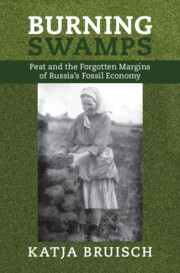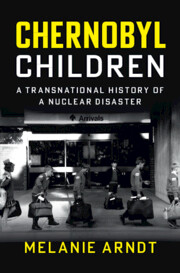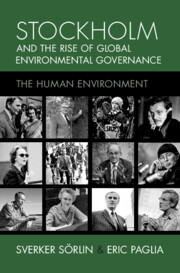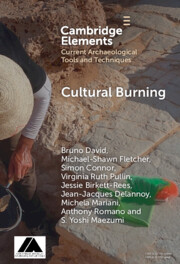Refine search
Actions for selected content:
99 results
Introduction
-
- Book:
- Burning Swamps
- Published online:
- 06 September 2025
- Print publication:
- 25 September 2025, pp 1-24
-
- Chapter
- Export citation
1 - African Diasporic Worlds
- from Part I - Black Geographies
-
- Book:
- Black Catholic Worlds
- Published online:
- 28 August 2025
- Print publication:
- 11 September 2025, pp 37-80
-
- Chapter
- Export citation

Burning Swamps
- Peat and the Forgotten Margins of Russia's Fossil Economy
-
- Published online:
- 06 September 2025
- Print publication:
- 25 September 2025
Late glacial and Holocene climate and landscape dynamics in the Valdai Highlands (East European Plain) inferred from lake sediment records
-
- Journal:
- Quaternary Research , First View
- Published online by Cambridge University Press:
- 01 September 2025, pp. 1-17
-
- Article
- Export citation
Practising Public Humanities in a Time of Crisis: Pandemic, Pregnancy, and Panic
- Part of
-
- Journal:
- Public Humanities / Volume 1 / 2025
- Published online by Cambridge University Press:
- 26 August 2025, e122
-
- Article
-
- You have access
- Open access
- HTML
- Export citation
The Future of (Environmental) History: A Roundtable Discussion
-
- Journal:
- Transactions of the Royal Historical Society , First View
- Published online by Cambridge University Press:
- 17 July 2025, pp. 1-21
-
- Article
-
- You have access
- Open access
- HTML
- Export citation
Madagascar’s environmental and human histories are dynamic, complex and deeply intertwined
-
- Journal:
- Environmental Conservation , First View
- Published online by Cambridge University Press:
- 01 July 2025, pp. 1-4
-
- Article
-
- You have access
- HTML
- Export citation

Chernobyl Children
- A Transnational History of a Nuclear Disaster
-
- Published online:
- 26 June 2025
- Print publication:
- 14 August 2025
Tropical deforestation and Indigenous resistance over the longue durée in South America
-
- Journal:
- Journal of Global History / Volume 20 / Issue 2 / July 2025
- Published online by Cambridge University Press:
- 22 May 2025, pp. 121-142
-
- Article
-
- You have access
- Open access
- HTML
- Export citation
7 - Europe’s Place in Global Environmental History
-
-
- Book:
- Globalizing Europe
- Published online:
- 06 March 2025
- Print publication:
- 13 March 2025, pp 86-105
-
- Chapter
- Export citation
Fox Trading and the Problem of Polar Bears in the Hudson’s Bay Company: Arctic Human Ecology and Fur in a Global Value Chain, 1900–1940
-
- Journal:
- Business History Review / Volume 99 / Issue 1 / Spring 2025
- Published online by Cambridge University Press:
- 26 June 2025, pp. 97-119
- Print publication:
- Spring 2025
-
- Article
- Export citation
The Sick Vines of Europe: Raisins, Phylloxera, and the Politics of Place in the Late Ottoman Aegean
-
- Journal:
- Comparative Studies in Society and History / Volume 67 / Issue 2 / April 2025
- Published online by Cambridge University Press:
- 23 January 2025, pp. 349-376
-
- Article
-
- You have access
- Open access
- HTML
- Export citation

Stockholm and the Rise of Global Environmental Governance
- The Human Environment
-
- Published online:
- 12 December 2024
- Print publication:
- 19 December 2024
-
- Book
-
- You have access
- Open access
- Export citation
5 - Economies, People, and Nature
-
- Book:
- Merovingian Worlds
- Published online:
- 22 November 2024
- Print publication:
- 05 December 2024, pp 143-172
-
- Chapter
- Export citation
6 - The US Military Presence in South Vietnam
- from Part I - Battlefields
-
-
- Book:
- The Cambridge History of the Vietnam War
- Published online:
- 02 January 2025
- Print publication:
- 28 November 2024, pp 133-153
-
- Chapter
- Export citation
5 - The Global and the Earthy
- from Part II - Concepts and Metaphors
-
-
- Book:
- Rethinking Global History
- Published online:
- 14 November 2024
- Print publication:
- 21 November 2024, pp 117-138
-
- Chapter
-
- You have access
- Open access
- HTML
- Export citation
The Significance of Small Things: Small Hydropower in the People’s Republic of China, 1949–1983
-
- Journal:
- Comparative Studies in Society and History / Volume 67 / Issue 1 / January 2025
- Published online by Cambridge University Press:
- 07 November 2024, pp. 141-168
-
- Article
-
- You have access
- Open access
- HTML
- Export citation
From Piracy to Mechanization: The Atlantic Logwood Trade, 1550–1775
-
- Journal:
- Itinerario / Volume 49 / Issue 1 / April 2025
- Published online by Cambridge University Press:
- 24 October 2024, pp. 43-63
-
- Article
-
- You have access
- Open access
- HTML
- Export citation
Archival Aerial Photographs of Africa: Present Potential and Imagining a Machine-Learning Future
-
- Journal:
- History in Africa / Volume 51 / May 2024
- Published online by Cambridge University Press:
- 23 August 2024, pp. 134-167
-
- Article
-
- You have access
- Open access
- HTML
- Export citation

Cultural Burning
-
- Published online:
- 10 May 2024
- Print publication:
- 06 June 2024
-
- Element
-
- You have access
- Open access
- HTML
- Export citation
